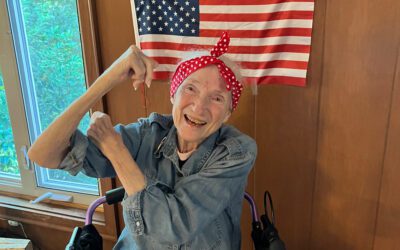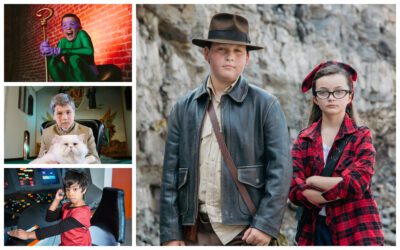[title subtitle=”words: Tom Wing, Historian and Author
images: courtesy Fort Smith Museum of History”][/title]
Life is full of seemingly insignificant situations, and surface-level associations that at the time appear to be only a temporary means to an end. But looking back through the lens of experience, some of those associations might prove to be historically big and important. My time with the iconic Boston Store in Fort Smith was like that.
Founded in 1879, by bothers Sigmund and Julius Baer, along with partner Aaron Fuller, the “Boston Store” began as a grocery and dry goods business. Rudolph Ney, after marrying Marie Baer, sister to Julius and Sigmund, soon joined the partnership. Ney became the sole partner when the other three relocated for a larger market in Saint Louis.
Under Rudolph Ney’s leadership, the Boston Store grew, adding a Van Buren location and becoming “the” source for finer things in Western Arkansas. The store offered designer dresses, furs, a tea room, and superior customer service.
Rudolph Ney died in 1936 but not before building a loyal customer base and an equally loyal and dedicated staff who, at Ney’s expense, enjoyed a yearly train ride to Mountainburg for the company picnic with swimming, softball, and food.
During the Great Depression, Jerome Ney, Rudolph’s son, took over and remained until the store closed in 1986. He began as a stock boy in a Chicago store, and his experiences helped him grow and expand the company. During World War II, he served in the Office of Price Administration, helping the war effort by controlling rationing and prices for items “essential” for the troops overseas. Jerome stated that the 1950s and 60s were “good years for a good business in a good town.” The company expanded into Oklahoma and Texas at this time.
In 1983, fresh from graduation at Northside High School, I became a Boston Store associate—we were always called associates and never employees. In 1971, the store moved to Central Mall from Garrison Avenue and anchored one of the three ends of the complex of shops. I had no idea the lessons I would learn, the experiences awaiting me, and the lasting impact it would have. I started as a stockman, working nights and Saturdays while attending Westark Community College, now UAFS. I put out new merchandise, cleaned and arranged stockrooms, and was responsible for closing each night which included locking all doors, stopping the escalators, and turning off the lights. A manager assisted me each evening. Each associate had a number on the store intercom. Mr. Jerome Ney was number one, his sons Randy (two) and Jerry (three) were followed by the store manager and so on through the departments and staff. As a stockman at the end of the store hierarchy, my number was forty.
From stockman, I moved into shipping and receiving, then a short stint in the marking room pricing new merchandise, and eventually into deliveries, including taking new stock to the Fayetteville store. I learned much in those days about Estee Lauder and Clinique cosmetics. Before my time was done, I also worked in collections as well as the sales floor in men’s clothing, shoes, and electronics. I even worked the store phone and intercom a few times.
One day, Mr. Jerome Ney paged me to his office. Everyone wondered what trouble I was in, but he sat me down and told me he had a special mission. The next day, I was to clock in, pick up two large bags of designer dresses, fly to DFW, hand off the dresses to the designer (I had a physical description and a code word), then fly back to Fort Smith arriving at five in the afternoon. I had never flown before, and Mr. Ney sensed my excitement. He told me to ride the tram completely around the airport and take in the sites between my flights. He also gave me a generous amount for lunch and snacks from his own wallet. He was waiting for me when I returned, wondering how it had gone. He didn’t seem to care much about the dresses but wanted to know about the flights, my lunch, and impressions of the airport.
I recently spoke with Jerry Ney, Jerome’s son, about his father. He and I talked about his father’s natural ability as a salesman and his keen awareness of granting customer satisfaction. Jerry said, “The salespeople in the Fountain Room [designer dresses] would alert my father when a male customer made a big sale. Dad would go to the Fountain Room and thank the man for the sale [usually at Christmas] and would bring along an assortment of Judith Lieber belts [designer and costly]. After thanking the man, he would suggest a belt as a stocking stuffer. He made the [follow-up] sale virtually 100% of the time!”
Mr. Jerome Ney, his family, and the Boston Store were steeped in tradition. However, times were changing, and shoppers wanted to pick from larger inventory and enjoy lower prices that larger volume stores could offer. Old-time service gave way to mass merchandising. I was fortunate to attend (although I didn’t know it at the time), the last company picnic at Lake Fort Smith, where we ate plenty of food, swam and played softball. The event had been started by Rudolph Ney and carried on for years. I was also in the last company photograph on the front row, just a few feet from the Ney family. And finally, I was there the day the store closed for good, a witness at the end of it, “a good business in a good town.”




